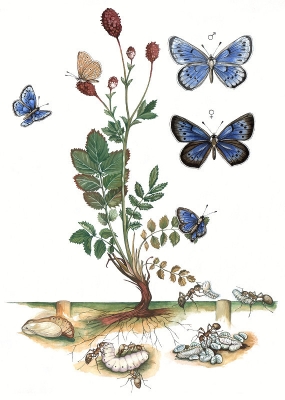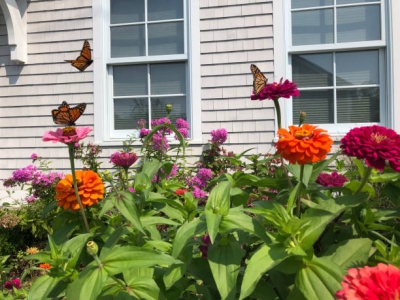
Butterflies and moths are both part of a big group of insects that have wings covered in tiny dust-like scales. Butterflies are usually brightly coloured and they fly during the day. They have a thin, hairless body and a pair of antennae each with a small bulb at the end. Moths tend to be duller in colour so they are camouflaged when they rest during the day on trees and leaves. They have antennae and plump, hairy bodies. Butterflies tend to fold their wings vertically up over their backs. Moths tend to hold their wings in a tent-like fashion that hides the abdomen. Butterflies are typically larger and have more colorful patterns on their wings. Moths are typically smaller with drab-colored wings. Reason we dislike moths is that they normally come out at night, whereas butterflies are active in the day. While we sleep, dozens of species of moths fly around, attracted to light and looking for mates.
1. Butterflies and moths are part of the same group of insects, known as ‘Lepidoptera’. To tell them apart, butterflies fly in bright sunshine, while moths are most active at night.
2. The lifecycle of a butterfly is in four stages: egg, caterpillar, pupa and adult butterfly.
3. Most butterflies don’t live very long. The Priam’s birdwing butterfly only lives for 10 days!
4. Butterflies have four wings, not two as you may think.
5. The wings of butterflies and moths, with their vibrant colours and patterns, are actually made up of tiny scales.
6. The largest butterfly in the world is the female Queen Alexandra’s birdwing, with a wingspan of over 25cm!
7. The smallest butterfly is the Western Blue Pigmy, which is only 2cm across.
8. Butterflies need heat to be able to move. When you see them resting in the sunshine, they are warming up their wings so they can fly.
9. Moths have a stronger sense of smell than butterflies.
10. Butterflies can see colours that humans can’t.
11. Moths navigate using the moon. This means they also are attracted to man-made lights, which cause them to get lost.
12. Butterflies taste with their feet!
Credit : Penguin.com
Picture Credit : Google



